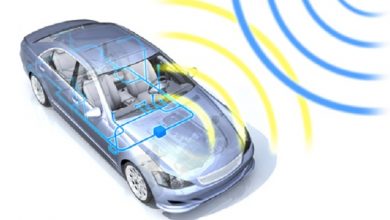Multilayered platform for health risk reduction and safety on public transport: A Case Study from Italy

Public Transport, a driver of change in the ecological transition of the urban ecosystem
Urbanization is one of the most relevant megatrend of our time (UN, 2022). The exponential growth of urban population will have profound and disruptive implications on a global scale in terms of environmental, economic, political, and social changes.
While today an estimated 56% of the world’s population lives in cities, it may perhaps come as a surprise that this percentage is higher in Europe. In fact, it is estimated that 75% of EU citizens currently live in cities.
Among the most demanding challenges arising from urbanization – air quality, energy efficiency, housing, safety, and security – urban mobility has a key role. In this global scenario, the movement of people and goods is assumed to become an essential factor in increasing economic competitiveness, supporting sustainable development, promoting social cohesion and progress, and improving the quality of life of people.
At the same time, urban mobility is becoming a major of sources of greenhouse gas emissions globally and, consequently, a crucial factor in meeting the 1.5-degree challenge.
With reference to the main urban transportation problems (congestion, road safety, affordability of public transit, environmental sustainability, and poor infrastructures for active mobility like pedestrian or bike lanes), an almost unanimous answer is shared and on-demand mobility solutions. However, in the absence of coordinated urban transportation solutions between private initiatives and municipalities, a situation has arisen in which many cities are now overwhelmed with competing offerings as multiple players compete for market share. Although this has led to greater availability of shared transportation options for citizens, this freedom of initiative has not led to more efficient transportation systems but has – often – contributed to further intensification of urban mobility. The lack of a holistic approach may be considered one of the main reasons why the entry of new mobility models into cities has increased the complexity but not the overall performance of current urban transportation.
According to our view, the technological paradigm of integration turns out to be equally crucial in business and governance as well. Problems arising from urban mobility can be addressed and solved through intelligent and integrated solutions.
Reducing car use and increasing environmentally friendly alternative transportation, such as public and active transportation, are effective approaches to mitigate the harmful environmental impacts caused by extensive vehicle use. In addition to decreasing air pollution, the promotion of public transport – increasingly electric or fueled by renewable resources – and alternative transportation modes can also bring about a series of other major benefits, such as reducing road congestion and thus road safety, increasing community mobility and commuter productivity, providing an equitable transportation system, and improving community health and the neighborhood economy.
Public transportation is therefore a structural driver of change to accelerate the ecological transition of the city ecosystem set by the European Green Deal and globally.
The synergy of Vehicle Telematics and IoT Technologies in Public Transport
Whereas IoT (Internet of Things)-enabled telematics was once a niche area, today the use of in-vehicle communication systems is gradually gathering wide and profitable applications. Recent studies state that in the forecast period 2022-2030, the size of the global automotive IoT market will be expected to increase at a compound annual growth rate (CAGR) of 25.13%.
The main reasons underlying this rapid market expansion are the ever-increasing demand for better safety features in vehicles, the sales of connected vehicles, and the growing enactment of supportive government measures and regulations. In this regard, just think of the introduction of the pan-European in-vehicle emergency call service (better known as ECall) made mandatory for all new vehicles, cars, and light commercial vehicles as of March 31, 2018.
In addition to initial benefits for early adopters of telematics, such as vehicle tracking, speed, travel distance/time, idling time, hard braking and driving, fuel consumption, vehicle breakdowns, seat belt usage, battery voltage and other engine data, IoT technology enables the integration of a wide range of data from extensive networks of sensors in and outside the vehicle. Automotive IoT application enables not only remote access to the vehicle, as well as offering real-time information on traffic status, parking availability, presence of alternative routes, inclement weather conditions, and updates on locations with less traffic and congestion, etc.
Professional transportation companies must face a series of challenges daily, ranging from increasing passenger numbers to improving service quality, reducing operational and vehicle costs to managing unexpected events such as precisely was the health crisis caused by Covid-19 pandemic.
The massive deployment of IoT technology thus takes public transportation sector to the next level. The benefits that such technology brings are manifold both in terms of greater personalization of travel experience for people who rely on public transportation to get around, and in terms of an advanced fleet management system for the operators themselves such as, for example, improved predictive maintenance, better routing and vehicle tracking, increased fuel efficiency, improved driver performance. McKinsey Center for Future Mobility (2018) estimated that once telematics adoption reaches 80%, the benefits of the combination of telematics and IoT devices will be found at a systemic level in the Smart City environment, just think of connected payment services that facilitate pedestrians to pay for public transportation and back-end monitoring that allows more buses or trains to be put into service in real time or based on predictive intelligence before a spike in demand.
Pordenone: a pioneering paradigm of a medium-sized city
Building on the above considerations, this article aims to illustrate the case of an Italian best practice.
Traditionally, ensuring the physical safety of public transportation passengers and personnel as well as the security of vehicles has always been a priority for operators and authorities in this industry. The issue of public transport safety, however, goes far beyond the internal ability of transport authority to safely perform its functions. In fact, it concerns the ability to provide reliable protection of passengers and personnel from external influences. In this sense, the Covid-19 pandemic emphasized this need even more, introducing huge challenges to public transport industry overall. Such unprecedented global emergency therefore highlighted the need to accelerate the development of a smart, sustainable, and user-centered transportation ecosystem.
In times of pandemic, worldwide regulatory protocols for public transportation all converged on one essential point: ensuring a “safe capacity” of maximum passenger load to guarantee social distance and prevent the spread of coronavirus, thus providing the highest level of protection for passengers and staff, especially during peak hours (mainly related to school hours).
Movement authorities and transit operators around the world had to act quickly to find quick and efficient solutions to provide safe mobility services in a global situation that was very fluid and dynamic at the time.
Italy was the first European country to be affected by the COVID-19 pandemic and therefore the first to have to respond to an unprecedented challenge.
ATAP – Local Transportation Authority operating in the Italian Province and City of Pordenone in the northeast of the country with a fleet of 171 vehicles – decided to address the challenges posed by the pandemic as an opportunity to rethink the organization of its services and respond by adopting new technological solutions capable of ensuring the health safety of passengers.
Digital technologies proved to be a crucial tool for safely managing public transportation considering the critical issues of the moment.
The first project implemented is called Salisco. This is the name of the multilayered platform for dynamic travel management – powered by MOVENS technology developed by Henshin Group – capable of ensuring compliance with the safety measures prescribed to cope with the health emergency. The IoT platform was designed to ensure safe and on-time trips by monitoring the changing travelers’ load restrictions, controlling the flow, and staggering ridership. Thanks to MOVENS technology, ATAP was able to significantly improve the levels of safety and wellbeing of citizens by:
- real-time monitoring of passenger flow to avoid overcrowding peak times
- calculating the number of extra means of transport to be added in specific time slots and specific routes especially during peak hours
The integration of MOVENS technology with ATAP’s fleet management module has also made it possible to optimize trip planning and remote management of each type of vehicle uploaded to the platform.
Travelers can rely on a smart app to check schedules, routes, and to know occupancy on local public service buses and coaches. The app – developed by the software company Molo17 – provides advance knowledge of the flow of people on the vehicles, making the contribution of each traveling citizen essential to reach solutions quickly, empowering their behavior, while fully respecting users.
Analysis of the immense amount of data also proves to be extremely relevant to the development of driver personal safety training courses based on precise indicators. In fact, ATAP maintains that improved corporate fleet management requires constantly updated training of its staff aimed at decreasing road accidents and driving stress, reducing fuel consumption and CO2 emissions. The fruitful collaboration with the Italian company DRIVEVOLVE Srl goes in this direction.
The topicality of the Covid problem calls for reflection on what has been done in the past and what is being done to prevent the spread of pathogens, especially in indoor environments.
The monitoring of airborne agents and pollutants in the air inside public transportation, also known as indoor air, which are potentially harmful to health, is a necessary activity that public and private entities are required to respond to increase the level of safety of people on board and improve travel comfort.
A recent study conducted by the Cooperative Institute for Research in Environmental Sciences (CIRES, 2021) and the University of Colorado Boulder has shown a correlation between high CO2 levels and increased risk of virus transmission, specifically Covid-19.
Figure 1. Schematic illustrating the exhalation, inhalation, and other loss processes of SARS-CoV-2-containing aerosols and the exhalation, inhalation, and other sources and sinks of CO2 in an indoor environment.
A high CO2 concentration is therefore a warning sign of poor indoor air quality because it indicates a low air exchange rate (TRA or TRAh Air Exchange per Hour). Consequently, in such a scenario, CO2 can serve as a “proxy” for the number of viruses in the air. Monitoring carbon dioxide levels within an environment is therefore a useful, inexpensive, and easy way to determine the risk of people contracting Covid-19.
Sensor data can then be used to assess indoor air quality; in addition, the multi-channel alert and notification system included in the platform enables timely deployment of actions to reduce Covid-19 risk transmission.
Considering this research and always about maximum assurance of public transportation safety, ATAP launched another project related to the adoption of an on-board air quality monitoring system.
The IoT multilayered platform – powered by MOVENS technology – collects measurements of several physical-environmental parameters such as the concentration level of CO2, fine particulate matter (PM10, PM2.5), VOCs (so-called volatile organic components such as, for example, ammonia or formaldehyde), nitrogen dioxide, ozone, carbon monoxide, outdoor and indoor temperature, relative air humidity. The cloud platform also detects other parameters such as atmospheric pressure, environmental brightness and UV index, acoustic noise level and vibration (through a triaxial accelerometer with a range of up to 16g and dynamics of 800Hz). The latter parameter is particularly interesting because it allows real-time detection of any potholes or irregularities in the road surface and thus contribute to road safety.
ATAP recently added another IoT module, self-powered with internal battery and mini-photovoltaic panel, based on in system d photocatalytic disinfection by means of transparent micro-perforated films to be applied on the vehicle’s interior windows.
Due to a photocatalytic additive, the removable film effectively reduces in a short period of time – through a physical process of photocatalytic oxidation (activated by any light source, solar or artificial of any kind) – up to 95% of microorganisms such as bacteria and fungi, transforming harmful organic substances into harmless inorganic molecules (H2O and CO2) for the organism. The effectiveness of such a device, WiGlass – produced by the Italian company WiWell Srl. – against Coronavirus has been confirmed by accredited laboratories and bodies that have carried out tests in accordance with UNI EN 13697: 2015 and Reed-Muench method.
Once the IoT module is installed, the platform – always powered by MOVENS technology – facilitates a reduction in sanitation expense costs as it operates on three levels:
- Verifies the effectiveness of the sanitization action by real-time monitoring of operational parameters/values against reference ones defined by laboratory tests
- Measures the residual presence of pollutant particles removed from the film
- Measures physical-environmental parameters that express the degree of indoor air quality
Conclusion
The path to innovation toward Smart Transportation begins with finding business partners.
In the perspective of sustainable development, ATAP is pleased to have strengthened ties with its local area, having identified valuable local partners, mentioned above, for the purpose of systemic enhancement of available resources and the configuration of an exemplary condition that can serve as a model for other Smart City initiatives.
Creating a public transportation safety management model requires a composable architectural pattern that can reflect the integration of information technology and digital tools into transportation processes and, consequently, process the endless amount of data from the IoT realm.
ATAP decided to adopt MOVENS multilayered platform primarily for two reasons related to its standardized microservice architecture:
- To facilitate rapid integration of additional services with no impact to business continuity
- To enable correlation of different assets from multiple Smart City domains and provide standardized data formats that ATAP can integrate with artificial intelligence-based solutions, simplifying complex workflows and greatly increasing fleet productivity.
Another key aspect for ATAP is the fact that MOVENS platform is evolving according to global standards set by the MOBI (Mobility Open Blockchain Initiative), thus ensuring maximum compliance with the EU’s General Data Protection Regulation (GDPR) and future regulations coming into force.
Author:

Narciso Gaspardo
President
ATAP (Local Transportation Authority operating in the Italian Province and City of Pordenone)
Narciso Gaspardo has extensive experience in the world of finance, having held various positions in Medioleasing, in the Friulian Dolomites Park, in Information Technology for the local government system (Insiel), until taking on the role of General Manager of the financial bank Mediocredito for several years. Currently, he is President of Local Public Transport of the Friuli Venezia Giulia region and ATAP (Local Transportation Authority operating in the Italian Province and City of Pordenone).
Published in Telematics Wire




